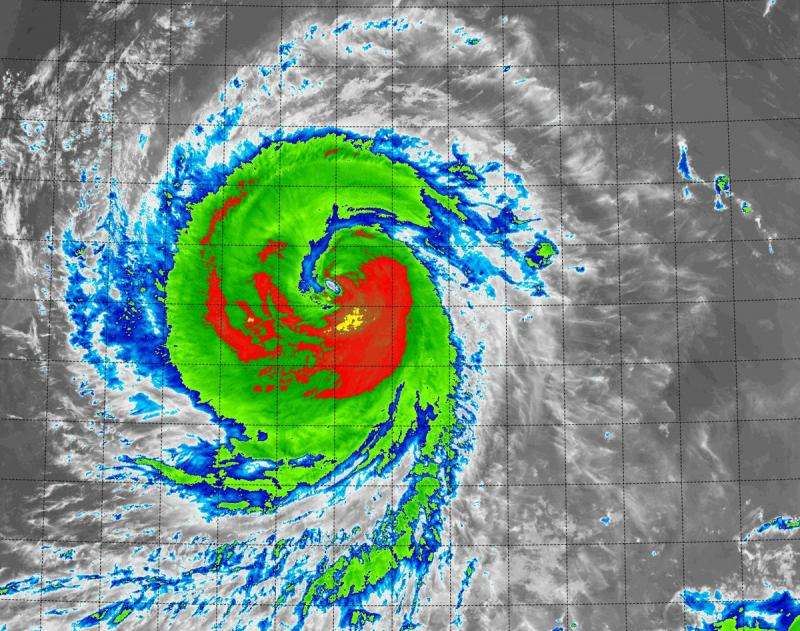Suomi NPP satellite sees Typhoon Goni's strongest sides

NASA-NOAA's Suomi NPP satellite passed over Typhoon Goni and gathered infrared data that helped identify the strongest part of the storm as the south and eastern quadrants.
The Visible Infrared Imaging Radiometer Suite (VIIRS) instrument aboard NASA-NOAA's Suomi satellite captured an infrared image of Goni on August 18 at 4:18 UTC (12:18 a.m. EDT) that showed the strongest thunderstorms with the coldest cloud top temperatures (near -63F/-53C) were in the eastern and southern quadrants.
The Joint Typhoon Warning Center noted that animated enhanced infrared satellite imagery showed a slight warming of convective tops, which means that they weren't reaching as high into the troposphere as a result of weakening uplift or push in the atmosphere. Otherwise, the system has maintained overall convective signature with tightly-curved banding wrapping into a 15-nautical mile diameter eye.
At 1500 UTC (11 a.m. EDT), on August 18, Typhoon Goni had maximum sustained winds near 100 knots (115.1 mph/185.2 kph).That makes Goni a Category Three typhoon on the Saffir-Simpson Scale. Goni is not expected to strengthen further.
It was centered near 18.8 North latitude and 132.1 East longitude, about 546 nautical miles (628 miles/ 1,011 km) east-southeast of Kadena Air Base, Okinawa, Japan. Goni was moving to the west at 16 knots (18.4 mph/29.6 kph).
The Joint Typhoon Warning Center expects Goni to approach and pass north of Luzon, Philippines by August 20 and 21 before approaching Taiwan from the southeast.
Provided by NASA's Goddard Space Flight Center

















